2nd Reporter, Exiled, Says Torture Forced Him Out
Homepage photo credit: Elizabeth Borrego, by CubitaNOW
Support Journal-ismsDonations are tax-deductible.
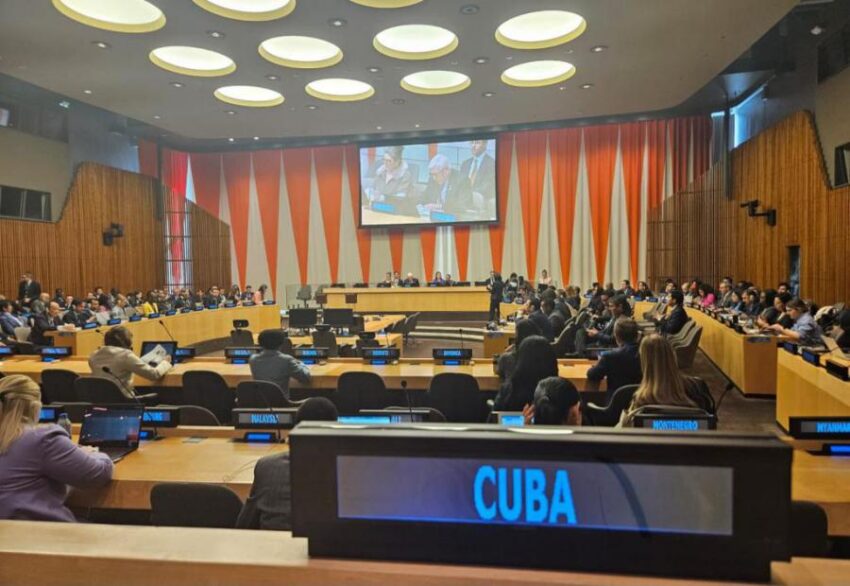
“Throughout its history, Prensa Latina’s offices have been singled out as a propaganda and intelligence-gathering tool for the Cuban regime,” the website CubitaNOW reported Saturday. “This, combined with the internal crisis, has generated an environment that alienates professionals, both young and experienced.” (Credit: misiones.cubaminrex.cu)
2nd Reporter, Exiled, Says Torture Forced Him Out
- En español < https://bit.ly/3BVpuuq >
The United Nations correspondent for the official Cuban news agency has decided to seek refuge in the United States, while a longtime independent journalist who had already left the island “announced his decision to go into exile, forced by constant harassment and threats from the government,” the website CiberCuba reported in separate dispatches this week.
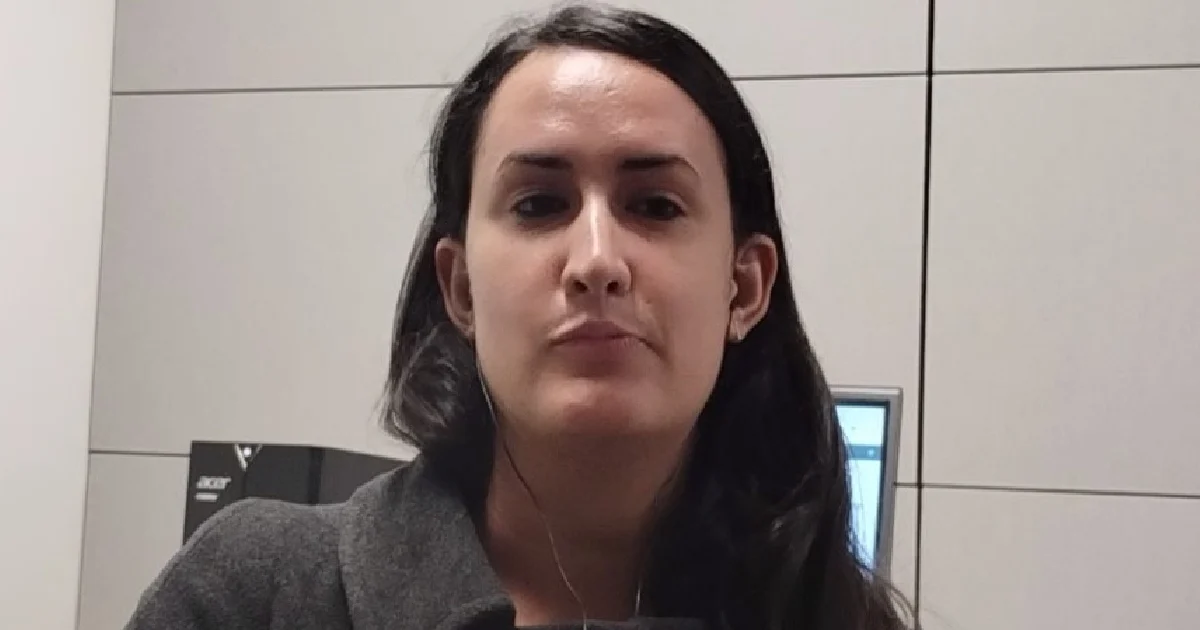 The decision by U.N. correspondent Elizabeth Borrego (pictured), 31, who comes from a family of journalists, “adds to a growing exodus of young and talented journalists who are seeking better living conditions, as noted by another employee of the media outlet in an interview with El Vigía de Cuba,” CiberCuba reported.
The decision by U.N. correspondent Elizabeth Borrego (pictured), 31, who comes from a family of journalists, “adds to a growing exodus of young and talented journalists who are seeking better living conditions, as noted by another employee of the media outlet in an interview with El Vigía de Cuba,” CiberCuba reported.
“In recent years, Prensa Latina,” the Cuban news agency, “has suffered the loss of about fifty journalists, many of whom have chosen to emigrate to the United States or other countries in search of better opportunities.”
A second journalist, José Luis Tan Estrada, who led humanitarian aid campaigns and denounced the abuses of the Cuban regime on social networks, said during a live video broadcast by Martí Noticias that he left Cuba facing “extremely difficult conditions.”
“Tan said he was imprisoned in Villa Marista, where he spent a week in a torture cell. During that time, due to poor diet, he lost two teeth, as he ‘chewed on a piece of salt as if it were stone in the rice.’ . . .
(Facebook postings may not be visible in some browsers; please consider using another browser to view. For English translation, please click “see more.”)
” ‘I came out with my eyes closed and putting my chest out,’ confessed Tan, who in the past suffered multiple episodes of harassment by the regime.
“He also stressed that the government’s constant repression, evidenced by internet shutdowns, surveillance, persecution and subpoenas, ended up forcing him to leave his country,” CubaNet reported.
” ‘For more than two years I have been receiving constant repression from State Security,’ Tan told Martí Noticias, denouncing his expulsion from the University of Camagüey and a smear campaign organized by the government and the local party, turning people against him. . . .”
Tan spoke from the Caribbean country of Guyana and posted on Facebook. “Tan directly blamed the Cuban regime for his exile, noting that ‘my journalism, my social media posts and my denunciations have hit [the regime’s] Achilles’ heel.’ He denounced the repressive methods of State Security, whom he blamed for forcing him to leave the island ‘in extreme situations and under threats.’
“Despite the adversities, the journalist reaffirmed his commitment to his work and his country. ‘To the henchmen of State Security I say that I will continue to do journalism, that I will continue to advocate for the freedom of political prisoners and for the freedom of #Cuba without ceasing,’ he wrote, assuring that neither distance nor exile will silence his voice in the struggle for justice and freedom.”
The past week also saw other developments in Cuba involving free expression and freedom of the press.
The caption in this Spanish-language video reads, “In each stroke, freedom rises like a silent cry on the walls. Nando OBDC dedicates his work ‘Mamá yo soy libre’ to political prisoners, and uses it as a tool of struggle.” (Credit: YouTube)
“Rapper and plastic artist Fernando Almenares Rivera, arrested in the early hours of December 31 in Havana by two State Security officers dressed in civilian clothes, is serving three days under arrest,” Diario de Cuba reported Friday. “According to DIARIO DE CUBA Adrianna Machado, the wife of the Cuban artist, who is known as Nando Obdc, this Thursday the political police carried out a search of the artist’s home, in the presence of his relatives.”
Into the “mother’s home came the State Security with six cars and even a Criminalistics team. They checked everything looking for a computer or if he had any hidden memory or information. They found nothing, but they threw away many photos of the paintings he made on the walls and took a Cuban flag that he had. They say they will return it when the process is over, if it has nothing to do with what they are investigating. On Tuesday he has a visitor, they say that Nando has ties to people living in the United States who want to commit violent acts in Cuba, Machado said.”
In addition, “On the morning of Thursday, December 26, the Cuban regime released independent journalist Henry Constantín, who was being arbitrarily held at the El Vivac detention center, located in the capital municipality of Arroyo Naranjo.
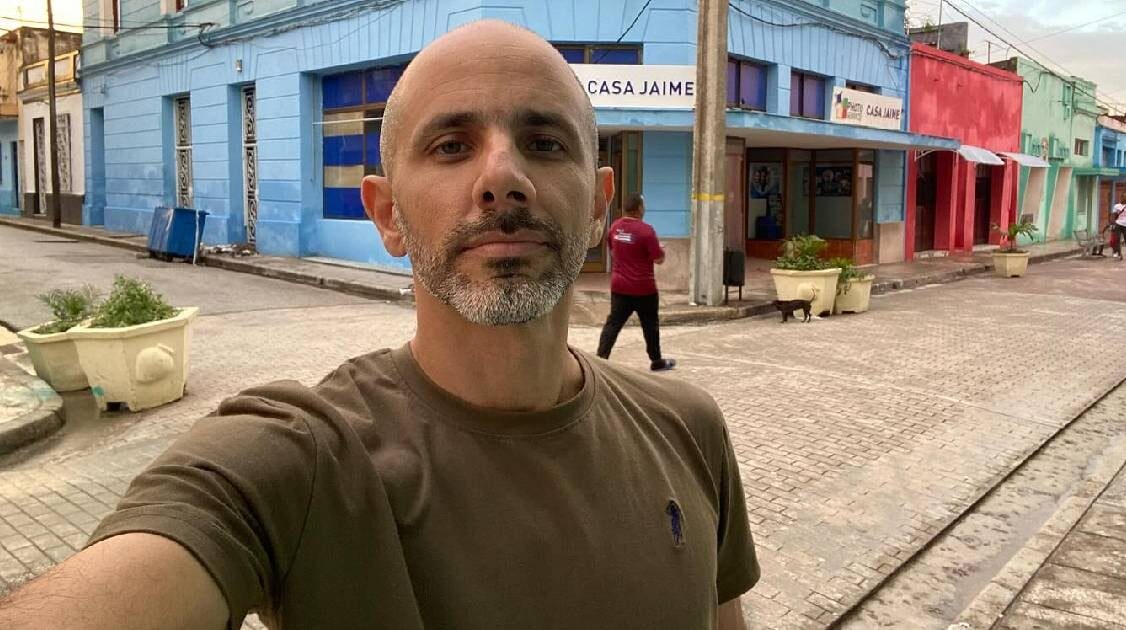 “Constantín (pictured), director of the digital media outlet La Hora de Cuba and regional vice president for Cuba of the Inter American Press Association (IAPA), was released without having been transferred to the oral hearing scheduled in the Provincial Court of Havana, in response to a habeas corpus appeal.
“Constantín (pictured), director of the digital media outlet La Hora de Cuba and regional vice president for Cuba of the Inter American Press Association (IAPA), was released without having been transferred to the oral hearing scheduled in the Provincial Court of Havana, in response to a habeas corpus appeal.
“The information was confirmed by the journalist himself, who made a phone call from the outskirts of El Vivac after regaining his freedom.
“Constantín had been arrested on December 19 by two State Security agents on charges of violating an alleged legal control that restricted his stay in Havana, according to the media outlet he directs.”
CibaCuba wrote of Prensa Latina, the Cuban news agency, “The agency is facing severe financial difficulties, with several of its international offices unable to meet rent and salary payments. Added to this is the lack of leadership, since the agency has not had a president since Luis Enrique González, who has served as its president since 2010, was sent as ambassador to an African country.
“The agency maintains, although in crisis, 36 branches in key cities around the world, including the Washington correspondent office, which remains active with correspondent Deisy Francis Mexidor, who has been linked to Cuban intelligence.”
The website CubitaNOW reported Saturday, “A colleague of Borrego’s commented on condition of anonymity: ‘She is an excellent professional, but like many young people, she dreams of a dignified life, and that is impossible in Cuba.’
“Throughout its history, Prensa Latina’s offices have been singled out as a propaganda and intelligence-gathering tool for the Cuban regime. This, combined with the internal crisis, has generated an environment that alienates professionals, both young and experienced.
“Borrego’s departure reflects not only a personal aspiration, but also the structural limitations faced by Cuban journalists. The recent emigration of renowned professionals such as Miguel Lozano, a former correspondent in Madrid, and Sergio Ortega, a sports commentator, underlines the magnitude of this brain drain.”
Ortega is the son of Manolo Ortega, a pioneer of Cuban broadcasting on television in the 1950s and for many years after the success of the Cuban revolution.
“Meanwhile, the Washington [correspondents’] office is still active under the direction of [Deisy] Francis Texidor, a journalist with previous ties to Cuban intelligence, according to sources cited by the website El Vigía de Cuba.
“The decision by Borrego and other journalists to disassociate themselves from the regime highlights the deep economic and social crises that the island is going through, leaving the future of the official media and the scope of their propaganda narrative up in the air.”
- ADN Cuba: Group of Cubans with I-220B Wins Lawsuit and Will Be Able to Apply for Residency in the United States (Dec. 27)
- CiberCuba: Police arrest filmmaker Orlando Mora Cabrera in Havana (Dec. 21)
- CiberCuba: The film “Killing a Man” evades censorship and manages to be screened in alternative spaces in Cuba (Dec. 24)
- Joseph J. Gonzalez, The Conversation: Marco Rubio is no friend of Havana − but does Trump’s pick for secretary of state mean Cuba policy is set? (Dec. 16)
- Graham Keeley, Voice of America: Cuba Cuts Internet, Surveils Calls of Journalists, Report Finds (Feb. 23, 2024)
- Patrick Oppmann, CNN: Analysis: How Marco Rubio could raise the stakes for Cuba if he becomes secretary of state (Dec. 8)
U.S. Reaches Out on Cuba’s Political Prisoners:
State Dept. Tells Families It Wants ‘Immediate Release’ of Loved Ones
Jan. 1, 2025
Continued at < https://bit.ly/49YTXEm >
State Dept. Tells Families It Wants Kin’s ‘Immediate Release’
En español: < https://bit.ly/4fJ184O >
Palestinian Authority Suspends Al Jazeera Over Coverage
‘This Rarely Happens for Gazans . . . Something of a Miracle’
Gannett Plans Racial Parity With Population in ’25
Biden, USA Today Agree: ‘We Are Going to Write History’
AAPI Reporter Attacked, ‘This is Trump’s America Now’
‘Too Dangerous’ for Parole, but OK for Fast-Food Work
How News Networks Performed in Ratings in 2024
With Assad Gone, Syria’s Journalists Are Free at Last
Short Takes: Sean ‘Puffy’ Combs; Word In Black; Reporters Committee for Freedom of the Press; training the next generation of investigative editors; Atlanta’s Horne Brothers and Journal-Constitution; tuition discounts at Columbia J-School; producing biographies of Black subjects; journalist wins case against ex-Mexican president; Colombia’s papers warn on press freedom; state of African media freedom; Chinese train Kenyan journalists; Sudan rebel group kills journalist.
Support Journal-ismsDonations are tax-deductible.
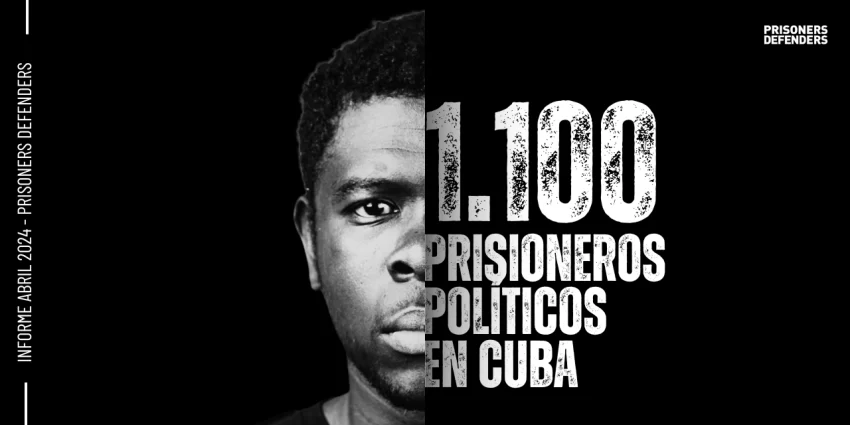
Luis Flores, CEO and co-founder of CiberCuba.com, wrote, “The complicit silence of the international community in the face of these deaths is alarming. Cuba has been a recurring theme in international forums, but concrete actions to pressure the regime remain insufficient. Civil society, both on and off the island, demands justice and the immediate release of all political prisoners.”
State Dept. Tells Families It Wants Kin’s ‘Immediate Release’
As a journalism delegation from historically Black Morgan State University went to Cuba in December to protest “apartheid” in the United States and discuss the banning of books by Black authors, U.S. State Department representatives were meeting with the relatives of political prisoners in Cuba, possibly including those of journalists.
About the same time, José Gabriel Barrenechea Chávez, an independent journalist in Cuba, was detailing how he had been arrested by Cuban authorities the previous month and taken to prison.
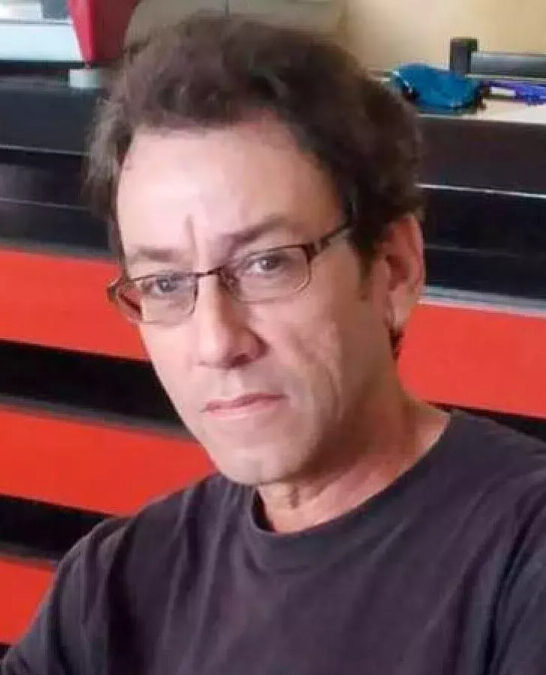 “Barrenechea (pictured) is the author of several books and has collaborated with independent media outlets such as Árbol Invertido, 14ymedio, and Cuba Encuentro,” said a Dec. 11 report from the group Prisoner Defenders.
“Barrenechea (pictured) is the author of several books and has collaborated with independent media outlets such as Árbol Invertido, 14ymedio, and Cuba Encuentro,” said a Dec. 11 report from the group Prisoner Defenders.
“Since 2019, he has been subject to regulations to prevent him from leaving the country, he is denied the right to work, and his books are banned in Cuba. Criminal investigators, in order to silence his critical voice, are attempting to fabricate a crime of ‘Sedition’ against him for having participated in peaceful protests in his hometown.”
What an irony — “his books are banned in Cuba.”
A group of more than 100 internationally renowned intellectuals, writers and political figures signed a document demanding Barrenechea’s immediate release, María Karla Vázquez González reported for YourNews.
The Spain-based Prisoners Defenders group also said, “In the last 12 months, the list of political prisoners in Cuba has added a total of 155 new political prisoners (an average of 13 new ones each month). During that period, a total of 1,213 political prisoners were on the list, all of them tortured in an eschatological manner without any international reaction yet to prevent this. Cuba has had a total of 1,785 political prisoners present in its prisons from July 1, 2021 until the end of last November, in just 3 years and five months. 650 of the current prisoners suffer from medical pathologies caused and/or aggravated by mistreatment.”
 As previously reported, three days before the Dec. 5-7 Morgan State symposium in Havana, Cuban activist Yoan Ricardo Llerena (pictured) was arrested after State Security searched his home and found copies of the U.N.-ratified Universal Declaration of Human Rights, which apparently is considered subversive in the communist country. International Human Rights Day, Dec. 10, was approaching.
As previously reported, three days before the Dec. 5-7 Morgan State symposium in Havana, Cuban activist Yoan Ricardo Llerena (pictured) was arrested after State Security searched his home and found copies of the U.N.-ratified Universal Declaration of Human Rights, which apparently is considered subversive in the communist country. International Human Rights Day, Dec. 10, was approaching.
And speaking of race, just before the arrival of the group from the historically Black university, the International Institute on Race, Equality and Human Rights, with offices in several countries, released a report, “In Cuba, Extreme Poverty Mainly Affects People of African Descent on the Island.”
It said, “The findings evidencing how extreme poverty mainly affects people of African descent in Cuba had already been recorded in 2023, in the sixth OCDH report on social rights in this country,” a reference to Observatorio Cubano de Derechos Humanos (OCDH), an independent Cuban civil society organization.
“At that time, 21% of Afro-Cubans said they resided in housing in danger of collapse, a figure that contrasts with 15% of the total number of people consulted (1,353), who said they were in the same situation.”
Among Luis Manuel Otero Alcántara’s most notable works is “Drapeau,” a performance in which he used the Cuban flag as a second skin for 30 consecutive days. This artistic act, which questioned the appropriation of national symbols by the regime, made him a target of State Security. (Credit: YouTube)
And on Dec. 2, the Afro-Cuban artist Luis Manuel Otero Alcántara celebrated his 37th birthday behind bars. “On July 11, 2021, Luis Manuel was arrested while trying to join the historic protests that broke out across the island,” Luis Flores wrote for the independent website CiberCuba. “Accused of ‘public disorder,’ ‘insulting national symbols,’ and ‘disrespect,’ he was sentenced to five years in prison in a trial that organizations such as Amnesty International have described as arbitrary and politicized.
“Since then, he has been transferred to the maximum security prison in Guanajay, where he has suffered multiple violations of his human rights, including periods of incommunicado detention and lack of adequate medical care. Despite all this, Luis Manuel has not stopped creating. In prison, he continues to make drawings and works that have been smuggled out and exhibited at international events, proving that art can transcend any physical barrier. . . .”
In a 2023 op-ed in the Miami Herald headlined, “‘Cuba’s authorities have stolen my youth just for speaking my mind’, Otero wrote, “More than 1,800 Cubans, mostly young and Black, were arrested in the protests in 2021.”
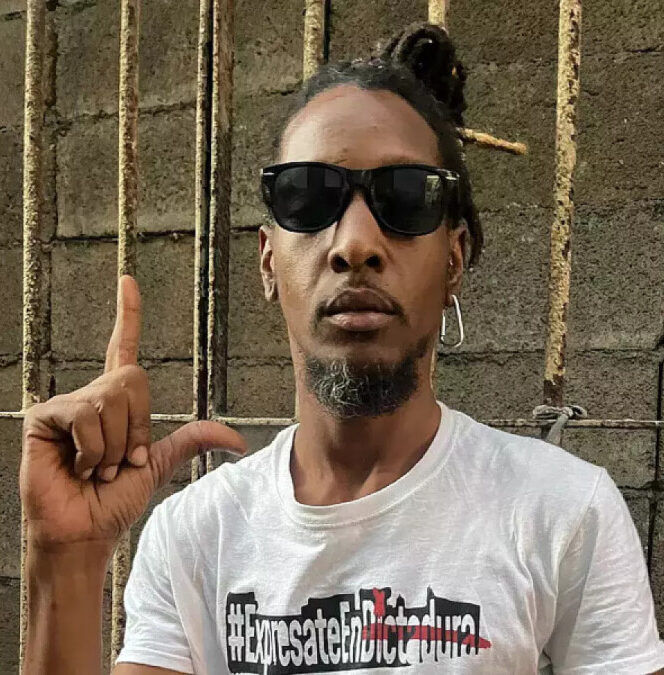 On New Year’s Eve, the Cuban regime arrested in Havana the Afro-Cuban visual artist, rapper and activist Fernando Almenares Rivera (pictured), known by his stage name Nando Obdc, according to a Facebook post by the Arts and Humanities project Fuego contra Fuego. He was accused of “terrorism against the Cuban state,” his wife said.
On New Year’s Eve, the Cuban regime arrested in Havana the Afro-Cuban visual artist, rapper and activist Fernando Almenares Rivera (pictured), known by his stage name Nando Obdc, according to a Facebook post by the Arts and Humanities project Fuego contra Fuego. He was accused of “terrorism against the Cuban state,” his wife said.
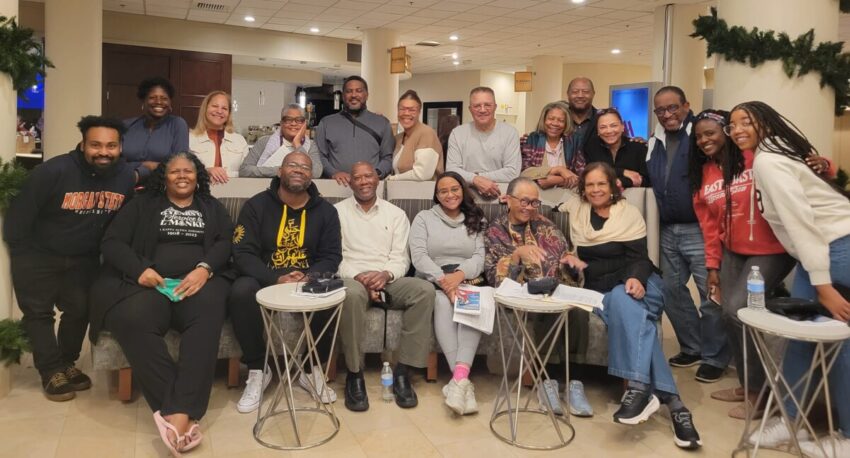
Presenters at the Morgan State University symposium in Cuba included author Nicole Hannah-Jones, Dr. Jason Johnson of Morgan State University and MSNBC, and historians Dr. Molefi Asante and Lisa Brock, wrote Michael Cottman, eighth from left in the rear. “We’re telling our global stories. 27 strong,” Cottman said on Facebook.
Dean Jackie Jones of Morgan State’s School of Global Journalism and Communication and founding dean DeWayne Wickham led the Morgan State delegation, which included Nikole Hannah-Jones, Pulitzer Prize winning New York Times Magazine staff writer known for “The 1619 Project.” The current and founding deans did not respond to requests for comment.
There was no indication that the journalists discussed freedom of the press or of expression in the country they were visiting.
Last year, the Cuban regime issued a news release praising Wickham and said it had awarded him a “guest professorship,” citing his opposition to the U.S. embargo and other positions.
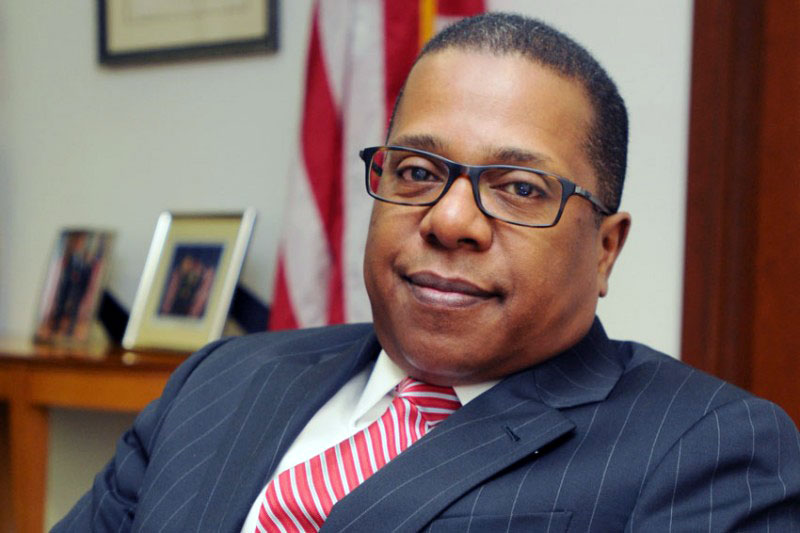 Brian A. Nichols (pictured), undersecretary of state for Western Hemisphere affairs, posted on X on Dec. 6, in the middle of the Morgan trip:
Brian A. Nichols (pictured), undersecretary of state for Western Hemisphere affairs, posted on X on Dec. 6, in the middle of the Morgan trip:
“While in Havana for the biannual migration talks, Deputy Assistant Secretary Eric Jacobstein engaged with independent entrepreneurs, religious leaders & families of political prisoners. He underscored the important work they do to improve conditions in Cuba and called for the immediate release of those unjustly detained.”
At today’s @OAS_official session to mark #HumanRightsDay, the U.S. joined voices from across the Americas to spotlight the ongoing fight for freedom & justice. We stand against arbitrary detention + political imprisonment in Cuba, Nicaragua, Venezuela & beyond. Together, we must… pic.twitter.com/UgsihEH6wy
— Ambassador Frank O. Mora (@USAmbOAS) December 11, 2024
Asked if the families of imprisoned journalists were among them, a State Department spokesperson messaged Monday:
- “We are deeply concerned about the Cuban government’s disregard for fundamental freedoms and human rights, including the large number of political prisoners it unjustly detains for exercising their fundamental freedoms and its daily oppression that stifles free speech and press.
- “The United States presses the Cuban government to release political prisoners and respect human rights in every high-level meeting.
- “To protect Cubans who speak with U.S. diplomats, we do not disclose their names.”
It was on this page a year ago that independent Cuban journalist Julio Antonio Rojas wrote, “There is an Arabic proverb that says; that the snake before the bite enchants the victim. The regime of Havana exercises a diabolical enchantment over those people who visit the island with the objective of observing and ensuring compliance with human rights.
“Such people, upon leaving Cuba, become defenders of the ‘wonderful things that exist on the island’, become accomplices and spokespersons for the regime. They have sweetened the pill with lies, guided them to see what they want them to see in staged scenarios while the truth is hidden behind the scenes. They deceived them, if indeed they are deceived.
“These defenders do not visit the relatives of political prisoners, they do not visit the jails where the political prisoners are repressed, where officials are violating their rights to phone calls, to decent food, health care and family visits. . . .”
Today a correspondent in Cuba for Journal-isms, Rojas listed for readers of this column what he considered the most important news from Cuba for November:
Heading the list: “The Cuban regime accredited the first group of inspectors of social communication,
subordinate to the Institute of Information and Social Communication, (IICS) with the aim to control and supervise by reinforcing state control over information.
“The IICS declared to the social network X that with the signing of the Code of Ethics, the inspectors
begin ‘a new stage on the road to the fulfillment of the regulations in force and the protection of citizens’ rights.’
̈”Opponents and independent journalists believe that it is one more machine created by the regime
to control and reinforce information and to continue the repression against independent journalists.”

“Freedom of association, assembly and demonstration are proscribed by law in Cuba,” the Prisoners Defenders group said at the United Nations. “The list of political prisoners and prisoners of conscience in Cuba now exceeds 1,153 cases. Since July 1, 2021, more than 1,790 innocent people have suffered political imprisonment or imprisonment of conscience on the island.” (Credit: Prisoners Defenders)
The publication El Toque, an independent media platform reporting from exile on Cuba, explained in February:
“Cuba is currently 172 in the World Press Freedom Classification issued by the NGO Reporters Without Borders, and is the country with the worst press freedom situation in Latin America.
“In May 2023, the National Assembly of People & Power passed the Social Communication Act, the first of its kind in the country. The regulations state that the media are socialist property and restricts the contents to which the constitutional order and the socialist system do not subvert.
“Decree-Law 370 is another of the rules used by the Government to pursue the autonomous exercise of journalism. The regulations regulate the imposition of fines on those who disseminate information — information contrary to the social interest, morality, morals and the integrity of individuals.”
Other developments on Rojas’ list, “Famine increases in Cuba and with it deaths from malnutrition, between 2022 and 2023,” and “Another week of intense blackouts begins in Cuba,” are expanded upon in a New York Times story by Frances Robles, Ed Augustin and Hannah Berkeley Cohen posted Monday, “10 Years Ago, a U.S. Thaw Fueled Cuban Dreams. Now Hope Is Lost.”
The subhead: “A decade since the United States and Cuba restored diplomatic relations — which many believed would transform the island — Cuba is in its worst crisis since Fidel Castro took power.”
Separately, Nora Gámez Torres reported Monday in the Miami Herald:
“Even as Cubans have been dying because of shortages of medicines and supplies at hospitals, and the government claims it doesn’t have the money to buy them due to U.S. sanctions, companies run by Cuba’s military have stashed away billions of dollars, according to financial records obtained by the Miami Herald. Gaviota, a company that runs tourist hotels and is just one of many owned by the military, is sitting on about $4.3 billion in its bank accounts, the documents show.”
She also wrote, “During a Communist Party meeting earlier this month, Cuban leader Miguel Díaz-Canel blamed U.S. sanctions — the government’s favorite whipping boy — for the crisis. Experts on the Cuban economy don’t dismiss the impact of the decades-old U.S. embargo on the island’s economy. But they say the blame also lies with the decades of government mismanagement, an obsolete centrally planned economy, shrinking aid from political allies, botched monetary policies and a slow recovery from the COVID pandemic. . . .”
There was good news on at least one front in Cuba-U.S. relations, however — at least in the view of some.
 Cuban reggaeton singer Oniel Bebeshito (pictured, via Facebook) achieved “a historic milestone” Saturday “by filling Miami’s Pitbull Stadium, a venue with a capacity for 20,000 people. This event marks a before and after in the artist’s career, being the first time that a Cuban urban singer has performed in a stadium of this magnitude in the United States,” CiberCuba reported.
Cuban reggaeton singer Oniel Bebeshito (pictured, via Facebook) achieved “a historic milestone” Saturday “by filling Miami’s Pitbull Stadium, a venue with a capacity for 20,000 people. This event marks a before and after in the artist’s career, being the first time that a Cuban urban singer has performed in a stadium of this magnitude in the United States,” CiberCuba reported.
“The night was not only a personal triumph for Oniel Bebeshito, but also for the Cuban urban genre, which continues to break barriers and gain space on international stages. . . .”
- CiberCuba: Jimmy Carter and his lesson of democracy to Fidel Castro in the historic speech given in Havana
- CiberCuba: Number of political prisoners in Cuba soars after wave of arrests (Dec. 11)
- CiberCuba: US demands release of political prisoners in Cuba: “Their families suffer” (Dec. 10)
- Luz Escobar, Diario de Cuba: The regime accuses the contestant artist Nando Obdc of links with people planning violent acts in Cuba (Jan. 3)
- Damian Fernandez, CubaNet: More than 19,000 Cuban migrants have sought refuge in Brazil in 2024
- Luis Flores, CiberCuba: From the cry for freedom to death in prison: At least four 11J [July 11, 2021] protesters have died (Dec. 11)
- Jerónimo Giorgi, LatinoAmerica 21: The Cuban regime seeks to charge independent journalist J. G. Barrenechea with ‘sedition’
- Dianelis Hernandez, ADN Cuba: Official TV station says Communications Law seeks “citizen participation”
- Journal-isms: The Embargo Made Them Do It: Journalists Accuse Cuba’s Rulers of Scapegoating (Dec. 6, 2023)
- Samantha Mendoza, Cuba Headlines: Jamaica Repatriates 21 Illegal Cuban Migrants
- Ambassador Brian A. Nichols, Miami Herald: The Biden-Harris legacy in the Western Hemisphere (Dec. 20) (paywall)
(Credit: Al Jazeera/YouTube)
Palestinian Authority Suspends Al Jazeera Over Coverage
“The Palestinian Authority temporarily halted operations of Qatar’s Al Jazeera television in the territory including its broadcasts, citing the network’s dissemination of ‘inciting material,’ the Palestinian news agency WAFA said on Wednesday,” Reuters reported.
“The culture, interior and communications ministers made the decision jointly because the channel broadcast material that was ‘deceiving and stirring strife,’ WAFA said without providing details on the subject matter.
“The order said the decision was temporary but did not specify an end date.
“The Palestinian Authority criticised Al Jazeera last week over its coverage of the weeks-long standoff between Palestinian security forces and militant fighters in the Jenin camp in the Israeli-occupied West Bank.
“Al Jazeera denounced Wednesday’s decision as ‘an attempt to discourage it from reporting spiraling events in the occupied territories,’ according to a statement.
“It called on the Palestinian Authority to rescind the decision and allow its journalists to report freely from the West Bank without intimidation.
“The decision was not expected to be implemented in Hamas-run Gaza where the Palestinian Authority does not exercise power. Fatah, the faction that controls the Palestinian Authority, said the broadcaster was sowing division in ‘our Arab homeland in general and in Palestine in particular.’ It encouraged Palestinians not to cooperate with the network. . . .”
Agence France-Presse added, “The network is already banned from broadcasting from Israel amid a long-running feud with Prime Minister Binyamin Netanyahu’s government, which has only worsened during the ongoing war in Gaza.”
Additionally, Aaron Boxerman wrote in The New York Times, “Palestinian critics and human rights groups have charged the Palestinian Authority with launching an increasingly authoritarian crackdown on dissent, violently assaulting demonstrators and intimidating critics of Mahmoud Abbas, the authority’s president.”
- Al Jazeera’s account
- PEN America: Al Jazeera’s Broadcast Capability Must be Restored in the West Bank (Jan. 2)
(Credit: New York Times)
‘This Rarely Happens for Gazans . . . Something of a Miracle’
In August, Nicholas Casey‘s story dominated the cover of The New York Times Magazine; it was a report on how he and videographer Moises Saman spent two weeks traveling with a rebel group in Sudan to document the civil war there.
Casey returned to the magazine front for the Dec. 22 print edition with “Escape From Gaza,” joined by photographer Paolo Pellegrin. “The war is nearly impossible to flee — except for a small number of sick and wounded who are offered a dramatic path to safety,” read the cover line. Casey went with some of them.
It was a different angle on the Israel-Palestine conflict.
“The project began when Paolo Pellegrin from the Magnum Agency got permission from the United Arab Emirates to board some of the evacuation flights this fall, and soon afterward, I started joining him,” Casey messaged Journal-isms Monday. “The UAE hasn’t widely publicized its humanitarian efforts, because coordinating them with Israel can be a thorny issue in the Middle East, and lead to criticism — but the Emiratis seemed ready to open up about what they were doing and we wanted to document it.
“Paolo and I have both covered Gaza during previous wars, but like almost all journalists in the current conflict, we’ve not been permitted by Israel to enter Gaza. We saw here a chance for us to tell a story that was less about victimhood, and more about Palestinians determining their futures after escaping the war.”
But though many Americans are tuning away from the news, especially about politics, owing to “news fatigue,” Casey said this should not be put in the “more grim news” category.
“To us, this was much more than a story about another tragedy — while it did involve immense suffering, as all wars do, at the center was the hope of an actual escape.
“This rarely happens for Gazans and is something of a miracle when it does. We also thought this was a good moment to present Palestinians as the protagonists here rather than only victims, since in this setting in the UAE, the families we met, for the first time since the war began, were able to have agency over their futures, determining what’s next for themselves and their families.”
Gannett created this “sizzle reel” to publicize its diversity philosophy (Credit: YouTube)
Gannett Plans Racial Parity With Population in ’25
In 2020, the year of the so-called racial reckoning prompted by the police murder of George Floyd, “Gannett, the owner of USA TODAY and more than 260 local news operations, announced a broad initiative . . . to make its workforce as diverse as the country by 2025 and to expand the number of journalists focused on covering issues related to race and identity, social justice and equality,” as USA Today reported at the time.
Gannett says it is on target to meet that parity benchmark.
A spokesperson pointed Journal-isms to the “inclusion” page of the Gannett website:
- “Expand the demographic data we track, providing employees the opportunity to voluntarily self-identify in order to better understand and serve our workforce, including those who are living with a disability, are LGBTQ+, or have military experience, and more
- “Expand transparency: provide further breakdowns of our team by department
- “Improve workforce representation year over year
- “Achieve a 30% increase in the representation of People of Color in leadership positions
- “Reach racial and gender parity with the diversity of our nation”
And:
Our Actions – We will:
- “Regularly share our workforce demographics while continuing to regularly measure our progress.
- “Further invest in training for managers impacting employee experiences
- “Evaluate and improve our People Programs (Recruitment & Hiring; Learning & Career Development; Succession Planning; Engagement; Retention; Competitive Pay & Benefits; Training; Policies and Procedures) to provide a safe environment where everyone is treated with respect and has equal opportunities to thrive
- “Hold our leadership accountable to meet defined objectives as identified in the annual goal setting process.”
According to U.S. population estimates updated July 1, people who were “white alone” were 75.3 percent of the population; “White alone, not Hispanic or Latino,” 58.4 percent; “Hispanic or Latino,” 19.5 percent; “Black alone,” 13.7 percent; “Asian alone,” 6.4 percent; two or more races, 3.1 percent; “American Indian and Alaska Native alone,” 1.3 percent; “Native Hawaiian and Other Pacific Islander alone,” 0.3 percent.
Gannett posted its current workplace demographics on this page.
They show whites to be 63.3 percent; “not disclosed,” 13.54 percent; Black or African American, 9.67 percent; Hispanic/Latino, 7.26 percent; Asian, 3.78 percent; two or more races, 1.66 percent; American Indian/Alaska Native, 0.63 percent; Hawaiian or Pacific Islander, 0.08 percent; Middle Eastern/North African, 0.08 percent.
- Editor & Publisher: Study: Public media newsrooms more diverse than commercial, but both have more work to do.
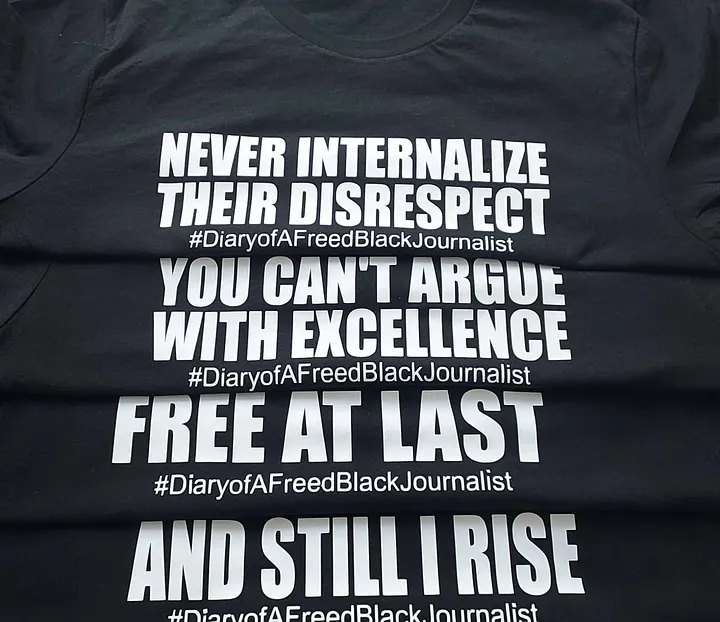 John W. Fountain, Substack: My White Editor Confessed She Was “Afraid” Of Me; My Sin: Reporting While Black
John W. Fountain, Substack: My White Editor Confessed She Was “Afraid” Of Me; My Sin: Reporting While Black
- Gannett Co.: Gannett Recognized as a 2024 Diversity Impact Awards Winner by Global ERG [Employee Resource Group] Network (July 31)
- Joe Ruiz, Medium: What do we as newsroom leaders owe our people? (Dec. 5)
- Mike Schneider, Associated Press: US census data.[show] how Middle Eastern and Hispanic residents differ in racial identity
- Diane Sylvester, Editor & Publisher: Sun-Times expands readership by centering community needs (Dec. 13)
Dana Taylor interviews reporter Deborah Barfield Berry on the trip to Angola. (Credit: “The Excerpt,” USA Today)
Biden, USA Today Agree: ‘We Are Going to Write History’
The early edition of Monday’s USA Today — before the death of former president Jimmy Carter forced a redesign — was dominated by Deborah Barfield Berry’s story about Wanda Tucker, whose ancestors, the family believes, are the first Africans brought to the English colonies. They arrived in 1619 on a ship that left from Angola.
Both Tucker and Berry were in Angola in early December when President Biden visited the country, telling the crowd, “We are going to write history, not erase history.”
In 2019, USA Today invited Tucker to Angola to search for her roots, and Berry was on that trip as well. Despite USA Today’s paywall, the new “story is available to everyone; there is additional related content linked within the piece that may be of interest,” a Gannett spokesperson said.
There is also an interactive graphic on African slave trade routes.
A box accompanying these latest contributions explains, “This story is part of a series exploring efforts by Black Americans to trace their family history from libraries in South Carolina to villages in African countries.”
- Deborah Barfield Berry, Nieman Reports: How a Trip to Angola Helped One Reporter Tell the Story of Race in America (April 19, 2023)

Suspect Patrick Thomas Egan, left, and reporter Ja’Ronn Alex. (Credit: KKCO-TV)
AAPI Reporter Attacked, ‘This is Trump’s America Now’
A Colorado man is being held on bias-motivated charges that he attacked a television news reporter of Pacific Island background after demanding to know whether he was a citizen, according to news reports. Patrick Thomas Egan, 39, who is white, is reported to have said something to the effect of, “This is Trump’s America now.”
Egan’s bail was set at $20,000 and is to appear in court on Thursday at 8:15 a.m., Kacie Sinton reported for KKCO in Grand Junction, Colo., the station where the victim of the attack, reporter Ja’Ronn Alex, worked.
[Jan. 2 update: “Egan has a legal record in California citing several similar crimes and offenses,” KKCO reported after Thursday’s court hearing. “According to statements made in court, Egan has been seeking mental health treatment for two decades with no success. Court officials also said that he is being screened for the ‘Fast Track Program’ and other mental health resources to see if he qualifies to receive help through the state.
[“The judge said that she was prepared to increase Egan’s bond but opted to keep it at $20,000. Egan is still in the Mesa County Jail and is eligible to post bond.
[“Court proceedings kept a protection order in place, banning Egan from coming within 100 yards of the victim. The judge also advised Egan to be ‘hyper aware’ when any news reporters are present. . . .”]
Egan is facing charges of bias-motivated crimes, 2nd degree assault by strangulation, and harassment by following and ethnic intimidation. Bias-motivated crimes and 2nd degree assault are both felonies, Sinton wrote. The harassment charge is a misdemeanor.
Egan was arrested Dec. 18 in Grand Junction after police say he followed Alex’s news vehicle for about 40 miles.the Associated Press reported Sunday. “Alex told police that he believed he had been followed and attacked because he is Pacific Islander.
“After arriving in Grand Junction, Egan, who was driving a taxi, pulled up next to Alex at a stoplight and, according to an arrest affidavit, said something to the effect of: ‘Are you even a US citizen? This is Trump’s America now! I’m a Marine and I took an oath to protect this country from people like you!’
“Alex, who had been out reporting, then drove back to his news station in the city. After he got out of his vehicle, Egan chased Alex as he ran toward the station’s door and demanded to see his identification, according to the document laying out police’s evidence in the case. Egan then tackled Alex, put him in a headlock and ‘began to strangle him,’ the affidavit said. Coworkers who ran out to help and witnesses told police that Alex appeared to be losing his ability to breathe during the attack, which was partially captured on surveillance video, according to the document.
“According to the station’s website, Alex is a native of Detroit.”
The Asian American Journalists Association said in a statement Monday, “This act of violence against a journalist of color, motivated by racial bias, underscores the ongoing threats faced by journalists and individuals from marginalized communities. It highlights how racist and anti-immigrant rhetoric, which increased during the pandemic, has led to physical attacks on members of AAPI communities.”
- Charles M. Blow, New York Times: Temporarily Disconnected From Politics? Feel No Guilt About It. (Dec. 18)
- Hayes Brown, MSNBC: Why Kash Patel is a cross between J. Edgar Hoover and Alex Jones
- Hayes Brown, MSNBC: What’s really behind Trump’s Greenland obsession (Dec. 24)
- G. Capuano, Media Matters for America: Spanish-language conservative media downplay Trump’s mass deportation plan (Dec. 18)
- Christina Carrega, Capital B: What a Second Trump Presidency Could Mean for Pending DOJ Investigations (Dec. 23)
- Jarvis DeBerry, MSNBC: Vivek Ramaswamy’s criticism of U.S. culture provokes MAGA world’s anger
- Gerren Keith Gaynor, theGrio: Black American and African faith leaders band together to take on Trump and White Christian nationalism
- Ruth Maclean, Abdi Latif Dahir and Elian Peltier, New York Times: Trump Disparaged Africa. So Why Are Some Africans Optimistic?
- Ruben Navarrette, Creators Syndicate: Biden’s Clemency for Federal Prisoners Is Only Part of the Story (Dec. 24)
- Clarence Page, Chicago Tribune: Elon takes on Washington, but can he take it over? (Dec. 23)
- Kyle Paoletta, Columbia Journalism Review: Going Broad: Brendan Carr wants to test the limits of the FCC’s authority (Dec. 16)
- Harrison Ray, Media Matters for America: Cable news is barely covering Trump and GOP plans to slash Medicaid (Dec. 10)
- Eugene Robinson, Washington Post: Trump’s border plan is cruel. No one will be able to say we weren’t warned.
- Eugene Robinson, Washington Post: We cannot abide Donald Trump’s wish for a compliant news media (Dec. 23)
- Juan Williams, the Hill: Our media is broken, and our nation will suffer the consequences (Dec. 23)
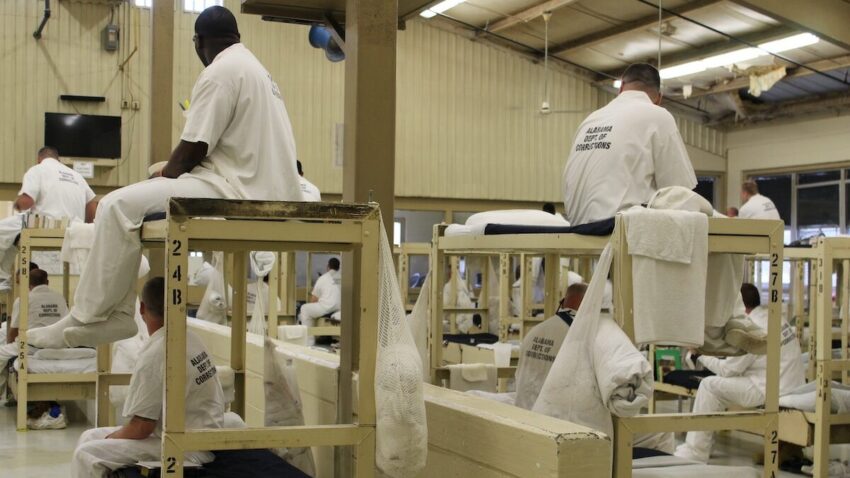
(Credit: Mary Scott Hodgin, WBHM Public Radio, Birmingham, Ala.)
‘Too Dangerous’ for Parole, but OK for Fast-Food Work
“No state has a longer, more profit-driven history of contracting prisoners out to private companies than Alabama,” Robin McDowell and Margie Mason reported Dec. 20 for the Associated Press. “With a sprawling labor system that dates back more than 150 years — including the brutal convict leasing era that replaced slavery — it has constructed a template for the commercialization of mass incarceration.
“Best Western, Bama Budweiser and Burger King are among the more than 500 businesses to lease incarcerated workers from one of the most violent, overcrowded and unruly prison systems in the U.S. in the past five years alone, The Associated Press found as part of a two-year investigation into prison labor.
“The cheap, reliable labor force has generated more than $250 million for the state since 2000 through money garnished from prisoners’ paychecks.
“Most jobs are inside facilities, where the state’s inmates — who are disproportionately Black — can be sentenced to hard labor and forced to work for free doing everything from mopping floors to laundry. . . .
“Many prisoners work 40 hours a week outside their facilities and then get weekend passes, allowing them to go home without any supervision or electronic monitoring. So when prisoners are then told they’re too dangerous to be permanently released,” said Chris England, an Alabama lawmaker pushing for criminal justice reform. It looks like “another way to create a cheap labor force that is easily exploited and abused.”
- Robin McDowell and Margie Mason, Associated Press: Takeaways from The Associated Press’ reporting on prison labor in Alabama (Dec 20)

How News Networks Performed in Ratings in 2024
“It’s no secret that 2024 saw broadcast, cable, and streaming news outlets struggle to attract a viewing audience with a significant disinterest in the news. That reality was made especially stark by presidential election that saw a 25% ratings decline from the 2020 election cycle across 18 networks,” Mark Mwachiro wrote Dec. 24 for TVNewser.
“Still, despite changing consumption habits and all the changes happening within the industry, those outlets remained a go-to source for a large segment of the viewing audience.
“Here are the 2024 news network ratings highlights according to Nielsen Media Research. (All times Eastern.)”
CBS was not included, as it did not provide ratings information, Mwachiro told Journal-isms.
“ABC News
“Over 67 million viewers tuned in for the ABC News Presidential Debate between Vice President Kamala Harris and President-elect Donald Trump, with 19 million total viewers watching on ABC alone. It was the most-watched debate on any network in 16 years, and ABC News ranked No. 1 among broadcast and cable news outlets across the board . . .”
“CNN
The CNN Presidential Debate between [President] Biden and Trump on June 27 was the first presidential debate of the 2024 election cycle and drew the biggest audience in the network’s history. A combined 52.65 million total viewers and 14.26 demo viewers tuned in to watch the debate, which was simulcast across multiple networks. Still, CNN lead the way with 9.53 million total viewers and 3.379 demo viewers. . . .”
“Fox News
“Fox News had a banner year as the No. 1 network throughout the 2024 presidential election season. It finished 2024 with the highest share of the cable news audience in nearly a decade, and marked nine consecutive years as the highest rated network on television. . . .”
“NBC News
“Today, NBC News’ flagship morning show, finished 2024 with a glow like that of the rising sun on a clear day. For the first time in 13 years, Today stands as the No. 1 morning show in both measured categories for the season to date, averaging 2.825 million total viewers and 707,000 A25-54 viewers. It wrestled away GMA’s stronghold on total viewers by winning its seventh straight week, the show’s best run since December 2019. . . .”
“MSNBC
“On Nov. 5, more viewers chose to follow a presidential election on MSNBC over CNN for the first time in the network’s history. . . .”
“NewsNation
“NewsNation solidified its status in the cable news space by becoming a 24/7 network in June. And on Election Night, it made history as the the first news network to call the race for Trump, preceding calls from more established outlets like Fox News. . . .”
“Spectrum News
“From January through November, Spectrum News averaged 1.76 million average daily household viewership. . . . [caveat in editor’s note.]
“Univision
“The Spanish-language network’s coverage of Election Night averaged 1.5 million total viewers and 617,000 A25-54 viewers in primetime, making it the No. 1 network on all of television for the entire night among U.S. Hispanics. Additionally, Noticias Univision’s town halls with Trump and Harris averaged 1.1 million total viewers and 356,000 A25-54 viewers. . . .”
With Assad Gone, Syria’s Journalists Are Free at Last
“After 21 years, the day Farouk feared had finally come. An envelope sealed with red wax made its way through the faded hallways of Syria’s national news agency, Sana, and landed on his desk. Inside was what employees called a penalty, the contents of which could range from a reprimand from the editors to a summons to one of Syria’s brutal security branches,” William Christou reported Monday for the Guardian.
“ ‘I found a mistake before the article was published and I brought it to the editors’ attention. I thought this would be a good thing but they punished me,’ Farouk, a journalist on Sana’s foreign news desk, said under a pseudonym.
“Farouk was lucky: he faced only an administrative consequence. Other co-workers had not been so fortunate. . . .”
As the new year arrived, Syrians staged their first new year’s celebration without an Assad in power for more than 50 years after the fall of Bashar al-Assad in December.
 “For the past 13 years, journalists had not been allowed to report freely as their news agency was on the frontline of the Assad regime’s propaganda effort . . .” Christou continued.
“For the past 13 years, journalists had not been allowed to report freely as their news agency was on the frontline of the Assad regime’s propaganda effort . . .” Christou continued.
“To ensure journalists did not write anything that contradicted the regime’s line, Syrian intelligence agents planted informants in the office to observe reporters. ‘You didn’t know who was the one among us writing reports on their fellow employees. They reported when you got into work, when you left, how long you spent in the bathroom,” [staffer Mohanned] Abdelrahman said.
“Journalists’ social media profiles were monitored. A status that expressed any dissenting view, or even a ‘like’ on a suspicious comment, would attract the attention of authorities.
“The consequences for journalists who dared to deviate from the state’s line could be deadly. Reporters recalled a colleague who was detained for three months and tortured daily, suspended from a pipe in a grotesque stress position. Another was severely tortured after it was discovered he had been sending footage of opposition protests in south Syria to Al Jazeera. . . .
“Journalists were obliged to change copy from Russia’s Sputnik news agency to make it stricter. For example, Russian media’s mention of ‘Ukraine’s army’ would be changed to ‘neo-Nazi forces’ in Sana’s stories.
“ ‘We would joke that we were the real Moscow, not them,’ Abdelrahman said, adding that in recent years journalists on the foreign desk could only write about Cuba, Iran, Russia and Venezuela. . . .’ “
- CubaNet: The fall of Syria shakes Havana (Dec. 9)
- Samuel Ramani, Foreign Policy: The Illusion of Russian Security in Africa Has Been Shattered
Short Takes
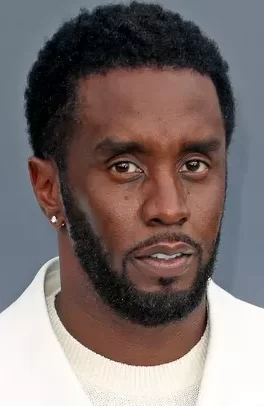 A “dozen or so” people who worked with Sean ‘Puffy’ Combs (pictured) and agreed to be interviewed, of “roughly 100” a reporter approached, “paint a picture of a marketing genius with an obsessive attention to detail, a steely drive, and an undeniable creative instinct, which helped Combs accumulate a portfolio of companies and assets worth an estimated billion dollars at its height in 2022,” Adrienne Samuels Gibbs reported Friday for Fortune. “They also tell of a man whose relentlessly controlling behavior and assertion of ownership over everything — and everyone — in his orbit made many feel trapped and gaslit. He clearly was a person few could oppose — and those who did sometimes paid a price for it. While the allegations against him remain just that, allegations, insiders’ accounts depict an atmosphere where there would be few limits on the boss’s behavior. . . .” Combs, now 55, was indicted in September on federal charges of sex trafficking, racketeering conspiracy and transportation to engage in prostitution and faces at least 30 civil lawsuits.
A “dozen or so” people who worked with Sean ‘Puffy’ Combs (pictured) and agreed to be interviewed, of “roughly 100” a reporter approached, “paint a picture of a marketing genius with an obsessive attention to detail, a steely drive, and an undeniable creative instinct, which helped Combs accumulate a portfolio of companies and assets worth an estimated billion dollars at its height in 2022,” Adrienne Samuels Gibbs reported Friday for Fortune. “They also tell of a man whose relentlessly controlling behavior and assertion of ownership over everything — and everyone — in his orbit made many feel trapped and gaslit. He clearly was a person few could oppose — and those who did sometimes paid a price for it. While the allegations against him remain just that, allegations, insiders’ accounts depict an atmosphere where there would be few limits on the boss’s behavior. . . .” Combs, now 55, was indicted in September on federal charges of sex trafficking, racketeering conspiracy and transportation to engage in prostitution and faces at least 30 civil lawsuits.
- Word In Black, a digital news collaborative of 10 Black-owned media brands, “aims to revolutionize data-driven insights from Black America with a new platform launching in 2025,” the collaborative announced Dec. 16, updated Dec. 18. The publishers “have accumulated significant first-party data over the years. The new platform will organize that data and apply powerful tools allowing it to be used for research, commercial and philanthropic purposes — providing unparalleled access to Black American perspectives and experiences. Starting with data from the 10 founding publishers, the platform aims to expand to include up to 30 additional Black-owned enterprises by 2027. The John S. and James L. Knight Foundation is the lead funder of the platform with an investment of $1.5 million to the Word In Black Racial Equity Fund over three years. . . .”
- ‘Fifty-four years after our founding, the Reporters Committee is better positioned today than ever before to protect First Amendment freedoms and the newsgathering rights of journalists, no matter who is in the White House,” the Reporters Committee for Freedom of the Press declared Dec. 12 in a year-end review. “Our legal team, now more than 20 attorneys strong, has tripled in size in the last eight years. We have critical experience that will bolster the Reporters Committee’s efforts to challenge attempts to silence or punish the press. But the work ahead will require a broader focus that stretches beyond the White House. It will call for a nationwide effort focused on helping journalists and news outlets shine a light on all levels of government — from city councils and police departments to state houses and federal agencies — and hold public officials accountable to the people they serve. . . .”
 “Working with the Walter Cronkite School of Journalism at Arizona State University (ASU), and in partnership with the international journalism organization Investigative Reporters and Editors (IRE), myself and other veteran investigative editors have been developing a curriculum to train the next generation of investigative editors,” Mark J. Rochester (pictured), executive editor of the Herald-Tribune in Sarasota, Fla., wrote Sunday. The online certificate program will offer “The Art of the Investigative Interview: Mastering the art of eliciting crucial information”; “Organizing, Outlining, and Writing/Scripting the Story: Transforming raw information into compelling narratives”; “Building a Diverse Team: Fostering inclusive and effective investigative collaborations”; “The Power of a Multimedia Mindset: Utilizing various storytelling formats to maximize impact”; “Managing for Resilience: Addressing the challenges and emotional toll of investigative work”; and “Buttoning Up: Fact Checking and Legal Review: Ensuring accuracy and mitigating legal risks.”
“Working with the Walter Cronkite School of Journalism at Arizona State University (ASU), and in partnership with the international journalism organization Investigative Reporters and Editors (IRE), myself and other veteran investigative editors have been developing a curriculum to train the next generation of investigative editors,” Mark J. Rochester (pictured), executive editor of the Herald-Tribune in Sarasota, Fla., wrote Sunday. The online certificate program will offer “The Art of the Investigative Interview: Mastering the art of eliciting crucial information”; “Organizing, Outlining, and Writing/Scripting the Story: Transforming raw information into compelling narratives”; “Building a Diverse Team: Fostering inclusive and effective investigative collaborations”; “The Power of a Multimedia Mindset: Utilizing various storytelling formats to maximize impact”; “Managing for Resilience: Addressing the challenges and emotional toll of investigative work”; and “Buttoning Up: Fact Checking and Legal Review: Ensuring accuracy and mitigating legal risks.”
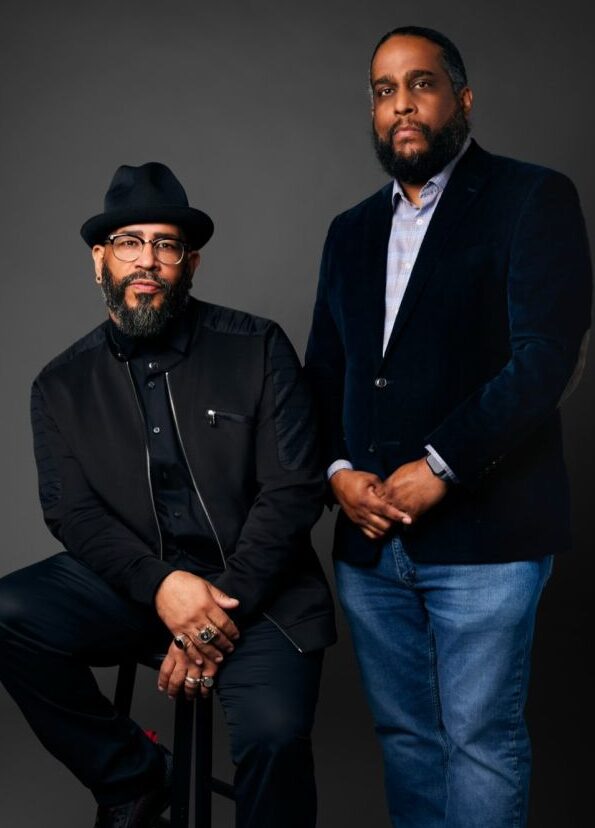 Ryon Horne (pictured, at right) and his brother, Byron Horne (left), planned to end their long run as full-time employees at the Atlanta Journal-Constitution on Dec. 31, Ryon Horne announced earlier in the month on LinkedIn. “In 2015, I was able to work on possibly the most important story of my career, certainly my life. I wrote a Personal Journey for the The Atlanta Journal-Constitution, documenting my brothers’ and I searching for our father’s first child, who was forced into adoption.” Ryon and brother Tyson Horne also directed and produced “The South Got Something to Say,” the newspaper’s full-length documentary about Atlanta’s relationship with hip-hop that was completed in 2023.
Ryon Horne (pictured, at right) and his brother, Byron Horne (left), planned to end their long run as full-time employees at the Atlanta Journal-Constitution on Dec. 31, Ryon Horne announced earlier in the month on LinkedIn. “In 2015, I was able to work on possibly the most important story of my career, certainly my life. I wrote a Personal Journey for the The Atlanta Journal-Constitution, documenting my brothers’ and I searching for our father’s first child, who was forced into adoption.” Ryon and brother Tyson Horne also directed and produced “The South Got Something to Say,” the newspaper’s full-length documentary about Atlanta’s relationship with hip-hop that was completed in 2023.
- “In the latest element of Dean Jelani Cobb’s initiative to make Columbia Journalism School more affordable to a broad range of students, the school announced November 21 that it would offer tuition discounts to graduates of Columbia University’s School of General Studies and of the City University of New York,” Cheryl Devall reported Dec. 5 for Black Alumni Network News. “General Studies alumni applying to the Class of 2026 will be eligible for a 25% discount, and CUNY graduates will qualify for a 35% reduction. Both institutions enroll large numbers of nontraditional applicants — often older than most undergrads and more likely to be first-generation college students, military veterans, or parents. At CUNY, a public university, close to 40 percent of first-year students were born outside the United States; that proportion includes undocumented immigrants. . . . “
- “The joys and challenges of producing biographies of Black subjects will be the focus of a major national conference March 21-22, 2025, in Montgomery, Alabama, presented by BIO in collaboration with Troy University-Montgomery,” Biographers International Organization announced. “Telling the Stories of Black Lives through Biography is believed to be the first conference of its kind since the 1980s. Through talks, panel discussions, and opportunities to tour Montgomery’s major civil rights memorials, the conference is intended to appeal to writers and readers of biography and history along with teachers and students from throughout the Southeast region.” Registration infomation.
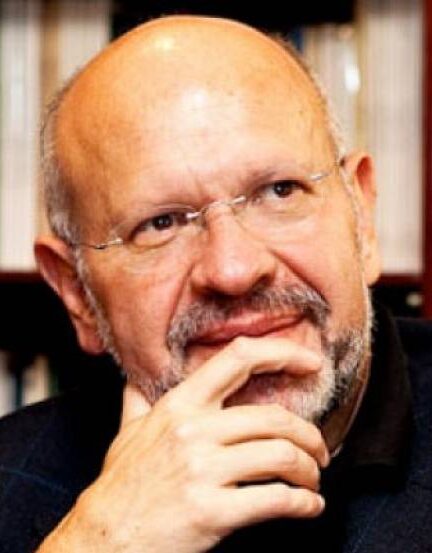 “Journalist Raymundo Riva Palacio (pictured) obtained a definitive amparo [protecton] judgment against the statements made at the [morning press conferences known as] ‘mañaneras’ of former [Mexican] President Andrés Manuel López Obrador,” LatAm Journalism Review reported Dec. 16, citing Mexico’s El Universal. “A judge ruled in favor of the appeal filed by the columnist, who claimed violation of his human rights. Riva Palacio said that he filed this appeal after […] the former president referred to him as a ‘brazen cretin’ for a newspaper column he wrote in which he criticized ‘mercenary YouTubers’. . . .”
“Journalist Raymundo Riva Palacio (pictured) obtained a definitive amparo [protecton] judgment against the statements made at the [morning press conferences known as] ‘mañaneras’ of former [Mexican] President Andrés Manuel López Obrador,” LatAm Journalism Review reported Dec. 16, citing Mexico’s El Universal. “A judge ruled in favor of the appeal filed by the columnist, who claimed violation of his human rights. Riva Palacio said that he filed this appeal after […] the former president referred to him as a ‘brazen cretin’ for a newspaper column he wrote in which he criticized ‘mercenary YouTubers’. . . .”
- “Thirty three Colombian newspapers and news sites published an editorial titled ‘For a pillar of freedoms,’ in which they warn about the situation of press freedom in Colombia,” LatAm Journalism Review reported Dec. 18, citing La Silla Vacía (The Empty Chair), which covers Colombia. “It says that during 2024, the country has been experiencing ‘a worrying setback in this field’ and calls on the government of President Gustavo Petro to guarantee freedom. . . .”
- Renowned African media scholars from around the world who convened in Accra, Ghana, “agreed the state of media freedom for journalists and internet users across Africa is mixed: while some papers outlined a new era of online freedom for digital activists, several studies highlighted significant hindrances for freedom of speech in Africa, including the arrest of journalists in Nigeria or internet shutdowns during periods of civil conflict in Burkina Faso,” Jeslyn Lemke reported Dec. 24 for Global Voices.
- “The Chinese Embassy in Kenya says it has begun training Kenyan journalists to promote professionalism and integrity,” Victoria Amunga reported Dec. 13 for the Voice of America. “But press advocates say the initiative is ironic as China sits close to the bottom in a key press freedom ranking for 2024. . . . Some 70 journalists participated in the training.”
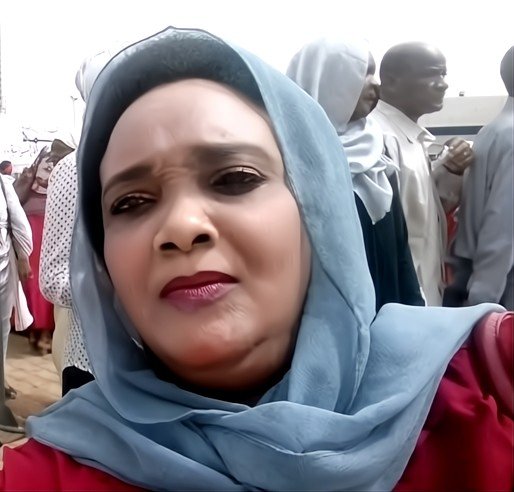 In Sudan, “On 8 December, members of the paramilitary group Rapid Support Forces (RSF) killed journalist Hanan Adam (pictured) and her brother, Youssef Adam, in their home in Wad Al-Asha, eastern-central al-Gezira state,” the International Federation of Journalists reported Dec. 24. “She was a correspondent for al-Midan, a local Sudan Communist Party-affiliated newspaper. The International Federation of Journalists (IFJ) joins its affiliate, the Sudanese Journalists Union (SJU), in condemning the heinous killing, and calls for a swift investigation. . . . Adam is the sixth journalist killed in Sudan in 2024. It is the deadliest country for journalists in Africa this year, as a result of the generals’ war. The RSF has consistently targeted journalists and media workers. It has been directly involved in the killing of at least five journalists, since the conflict began in April 2023.”
In Sudan, “On 8 December, members of the paramilitary group Rapid Support Forces (RSF) killed journalist Hanan Adam (pictured) and her brother, Youssef Adam, in their home in Wad Al-Asha, eastern-central al-Gezira state,” the International Federation of Journalists reported Dec. 24. “She was a correspondent for al-Midan, a local Sudan Communist Party-affiliated newspaper. The International Federation of Journalists (IFJ) joins its affiliate, the Sudanese Journalists Union (SJU), in condemning the heinous killing, and calls for a swift investigation. . . . Adam is the sixth journalist killed in Sudan in 2024. It is the deadliest country for journalists in Africa this year, as a result of the generals’ war. The RSF has consistently targeted journalists and media workers. It has been directly involved in the killing of at least five journalists, since the conflict began in April 2023.”
To subscribe at no cost, please send an email to journal-isms+subscribe@groups.io and say who you are.
Facebook users: “Like” “Richard Prince’s Journal-isms” on Facebook.
Follow Richard Prince on Twitter @princeeditor
Richard Prince’s Journal-isms originates from Washington. It began in print before most of us knew what the internet was, and it would like to be referred to as a “column.” Any views expressed in the column are those of the person or organization quoted and not those of any other entity. Send tips, comments and concerns to Richard Prince at journal-isms+owner@
View previous columns (after Feb. 13, 2016).
View previous columns (before Feb. 13, 2016)
- Diversity’s Greatest Hits, 2018 (Jan. 4, 2019)
- Book Notes: Is Taking a Knee Really All That? (Dec. 20, 2018)
- Book Notes: Challenging ’45’ and Proudly Telling the Story (Dec. 18, 2018)
- Book Notes: Get Down With the Legends! (Dec. 11, 2018)
- Journalist Richard Prince w/Joe Madison (Sirius XM, April 18, 2018) (podcast)
- Richard Prince (journalist) (Wikipedia entry)
- February 2018 Podcast: Richard “Dick” Prince on the need for newsroom diversity (Gabriel Greschler, Student Press Law Center, Feb. 26, 2018)
- An advocate for diversity in the media is still pressing for representation, (Courtland Milloy, Washington Post, Nov. 28, 2017)
- Morgan Global Journalism Review: Journal-isms Journeys On (Aug. 31, 2017)
- Journal-isms’ Richard Prince Wants Your Ideas (FishbowlDC, Feb. 26, 2016)
- Richard Prince with Charlayne Hunter-Gault, “PBS NewsHour,” “What stagnant diversity means for America’s newsrooms” (Dec. 15, 2015)
- Book Notes: Journalists Follow Their Passions
- Book Notes: Journalists Who Rocked Their World

